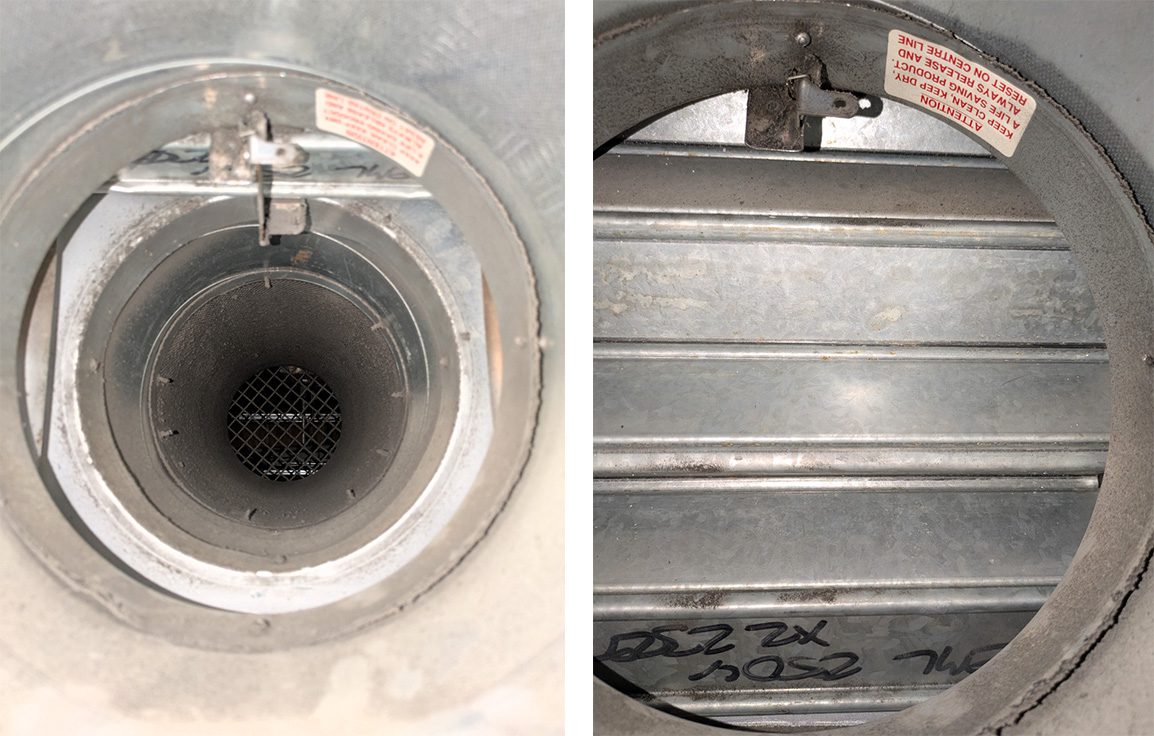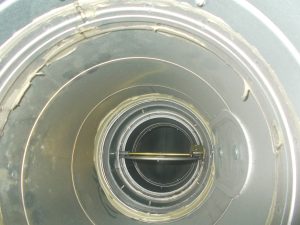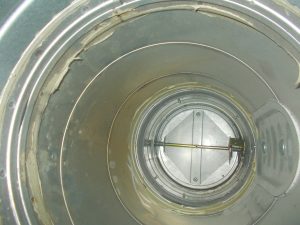Fire Damper Services
Fire dampers are a vital part of a building’s fire safety system. Their role is to slow the spread of fire and smoke through ventilation ductwork, giving occupants crucial time to evacuate safely.
Like all safety equipment, fire dampers must be regularly tested and maintained to ensure they will perform effectively in an emergency. Without proper upkeep, issues such as corrosion, dirt build-up, or poor installation can cause dampers to fail when they are needed most.
In a fire, flames and smoke can travel rapidly through ductwork, worsening the danger, damaging escape routes, and putting lives at risk. Effective fire damper testing helps ensure your building remains compliant, protected, and above all, safe.

All you wanted to know about Fire Damper Testing
Want to learn more about fire dampers and why regular testing is so important? Simply complete the form below to receive your copy of our “Ultimate Guide to Fire & Smoke Control Dampers 2025”. Once submitted, you’ll instantly receive an email with a link to the guide.

Our commitment:
When you choose Swift Fire Compliance, you can be confident that every aspect of your fire and smoke damper compliance is handled with care and expertise. Our team will:
Fire Damper Testing FAQ’s
What are fire dampers?
A fire damper is a type of passive fire protection device installed within the ductwork of heating, ventilation, and air conditioning systems. Its primary function is to delay the spread of smoke and fire, giving building occupants enough time to evacuate safely.
Without fire dampers, flames and smoke can travel rapidly through duct systems, bypassing fire-resistant walls and floors and compromising escape routes. Fire dampers automatically close in the event of a fire, helping to contain the blaze, protect property, and, most importantly, preserve safe evacuation routes to save lives.
How do fire dampers work?
Fire dampers are installed in ductwork where it passes through fire-rated walls and floors, forming part of the building’s fire compartment barriers. Functioning similarly to a roller shutter, they automatically close to block the spread of fire and smoke. Fire dampers can be activated in two ways:
Thermal Activation
When a specific temperature is reached, a fusible link melts or a bi-metallic strip reacts to the heat, triggering the damper to spring shut.
Electrical Activation
Some dampers are electronically operated, closing automatically when triggered by smoke or fire detectors connected to the system.
Why is fire damper testing important?
Fire dampers are a vital component of any building’s fire safety system. To function effectively in an emergency, they must be regularly tested and maintained. Failure to do so can compromise their performance—and in a fire, this could be the difference between life and death.
In light of recent high-profile building fires and recommendations from the Hackitt Report, it has never been more important to take proactive measures to prevent the spread of fire and ensure the safety of occupants and property.
How often should fire dampers be tested?
Fire dampers must be tested annually to ensure they are fully operational and able to perform in an emergency. Regular testing is just as essential as checking fire alarms, helping to keep buildings safe and compliant with legal requirements. Don’t delay—consistent maintenance ensures your fire safety systems are always ready to protect lives and property.
What causes fire dampers to fail?
Fire dampers can fail for several reasons, with the most common being obstructions or blockages, corrosion, poor installation, broken springs, and dirt or debris affecting tight seals.
Even a single damper failure can have catastrophic consequences, allowing smoke and fire to spread rapidly throughout a building. This can lead to serious property damage and, most importantly, put lives at risk.
Regular inspection, testing, and maintenance are essential to ensure these critical safety systems work effectively, keeping people and property safe in the event of a fire.
What does fire damper testing involve?
During our fire damper testing and maintenance appointments, you can expect a thorough and professional service that includes:
- Creating a complete inventory of all fire dampers and their locations within the building.
- Inspecting each damper for signs of corrosion, damage, or obstructions.
- Activating and ‘dropping’ each damper to ensure proper functionality.
- Cleaning channels and runners to maintain optimal performance.
- Providing advice on any dampers that require repair or replacement.
- Resetting all dampers to full operational status.
- Producing a comprehensive report detailing locations, maintenance carried out, agreed repairs or replacements, and any recommendations or exceptions.
Fire Damper Services
Many building managers aren’t even sure if their properties have fire dampers, or when they were last tested. As Essex’s leading fire damper testing specialists, Swiftclean ensures that all fire dampers are fully operational and compliant, helping to keep both your building and its occupants safe.
To learn more about our fire damper servicing and how we can support you, get in touch today or complete our contact form, and one of our friendly team members will be happy to assist.
More resources and best practice
Fire Damper Testing: Areas We Cover
At Swift Fire Compliance, we provide specialist fire and smoke damper testing and inspections nationwide, with locally based teams on hand to deliver a reliable, professional service wherever you are in the UK.
With over 40 years of experience, we are trusted by Housing Associations, Councils, Hotels, Restaurants, Schools, Facilities Management companies, and M&E contractors. Our expertise ensures that your fire safety systems remain compliant, effective, and in peak condition through thorough testing, maintenance, and reporting.
“Fire & Smoke Control Dampers are critical in maintaining building fire compartmentation and protecting fire escape routes. Ensuring that they are compliant and function correctly through thorough, regular, effective inspection and testing, is vital to life safety, by ensuring that they will perform in the event of a fire.”
Gary Nicholls, MD of Swiftclean



